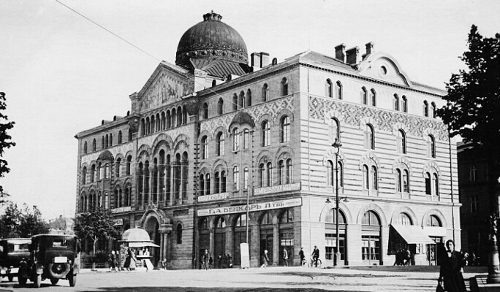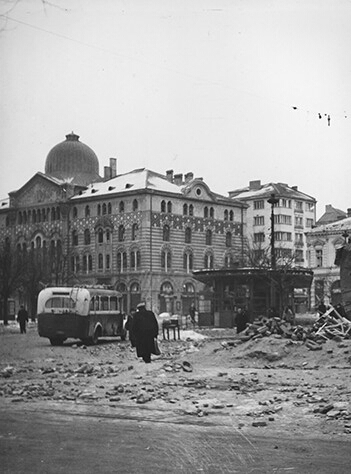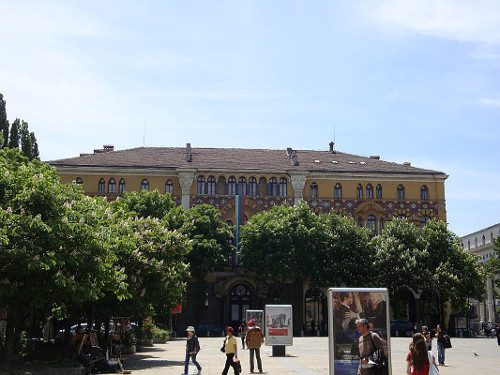19, ‘St. Nedelya’ Sq.

The colourful building on 19, St. Nedelya Sq. houses the Faculty of Theology of Sofia University, the St. Clement of Ohrid chapel-monument, an Ecclesiastical Library and the Church Museum of History and Archaeology to the Holy Synod. Ever since its inception, the impressive building has been thought of as a home for a Higher School of Theology, a “centre of science and faith.” To the fulfilment of that vision, the Cabinet of Ministers cedes state property adjacent to the garden of the Sofia Metropolitan, and in 1913, with the funds raised for the monument of the Bulgarian Exarchate – more than 200 000 LEVA, construction works commence.
Earlier still, in 1912, the project committee had commissioned Friedrich Grünanger, Austrian national, author of some of the Bulgaria’s most iconic buildings – including the Regional Government Building in Ruse, the Central Mineral Baths, the Sofia Synagogue, the Sofia Theological Seminary, etc. Grünanger had already left Bulgaria to live in Salzburg, thus the additional arrangement provisioning for travel allowance; his agreed fee accounted for 3.6% of the total value of the planned building.

Construction starts in 1913 and by the fall of 1915, it is almost finished, though only the interior plaster is laid. Finishing works are delayed by the country’s entry into the First World War, and in the early 1917, Arch. Kiro Marichkov converts the building to a military hospital. It is used as such over the next two years.
The end of the war and the subsequent national catastrophe delay the finishing works once more. It is not until 1922 that the facing of the exterior begins. The approved artistic design belongs to Haralampi Tachev – author of the capital’s coat of arms and of the façades of many of the city’s public buildings, including the St. Alexander Nevski Patriarch Cathedral, the Prince Alexander I von Battenberg’s mausoleum, the Vrana Palace, etc. The project included a central fresco on the gable, contributed by Nikola Ganushev, professor of Painting at the Fine Arts Academy. The fresco rendered the solemn liturgy at which Hilarion of Makariopolis read the firman instituting the independent Bulgarian Church. Below it, two large and eight small medallions, with additional four on the western façade, featured the saint brothers Cyril and Methodius, Prince Boris I, St. Clement of Ohrid, Chernorizets Hrabar, St. Patriarch Evtimii, Paisii Hilendarski, Sophronius of Vratsa, Neofit of Rila and other educators and church activists.

The final construction costs amounted to the colossal 700,000 LEVA. Its color-rich facade, red-brick rows, ceramic facing, columns and arcs, inscribe it in the evolving ensemble of public buildings, reviving medieval architectural motives as a daily reminder to Bulgaria’s glorious past.
Finally completed, the building of the Higher Theological School opens in the fall of 1923 to welcome its first students. The air raids of January 10 and March 30, 1944, however, turn the building and the valuables it stored into ruins. The first bombing destroys the adjacent four-storey building in the garden of the Sofia Metropolitan. The shock wave severely damages the building of the Theological Academy. The Academy suffers its worst hit on March 30, 1944, when fire consumes its dome and the central fresco of the establishment of the Bulgarian Exarchy. Thus perishes the splendour of this architectural monument – later restored, but due to insufficient funding, not to its original form.